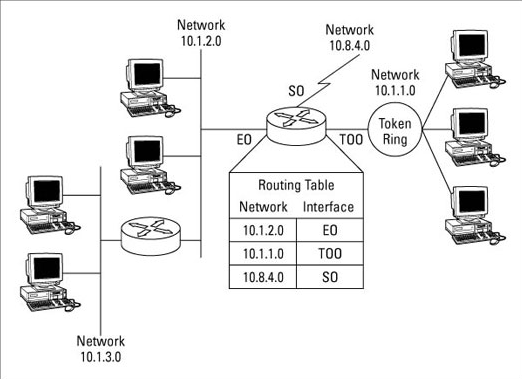What is Routing?
Routing is the process of sending a packet of information from one network to another network. Thus, routes are usually based on the destination
network, and not the destination host (host routes can exist, but are used only in rare circumstances).
To route, routers build Routing Tables that contain the following:
>The destination network and subnet mask
> The “next hop” router to get to the destination network
> Routing metrics and Administrative Distance
The routing table is concerned with two types of protocols:
> A routed protocol is a layer 3 protocol that applies logical addresses to devices and routes data between networks. Examples would be IP
& IPX.
> A routing protocol dynamically builds the network, topology, and next hop information in routing tables. Examples would be RIP,
IGRP, OSPF, etc.
To determine the best route to a destination, a router considers three elements
> Prefix-Length
> Metric (within a routing protocol)
> Administrative Distance (between separate routing protocols)
Prefix-length is the number of bits used to identify the network, and is used to determine the most specific route. A longer prefix-length indicates a more specific route. For example, assume we are trying to reach a host address of 10.1.5.2/24. If we had routes to the following networks in the routing table:
10.1.5.0/24
10.0.0.0/8
The router will do a bit-by-bit comparison to find the most specific route, Since the 10.1.5.0/24 network is more specific, that route will be used, regardless of metric or Administrative Distance.


Comments
Post a Comment